The creative genius of Antoni Gaudí changed Barcelona’s cityscape with a unique aesthetic designed to engage all your senses.
By ANUBHUTI KRISHNA
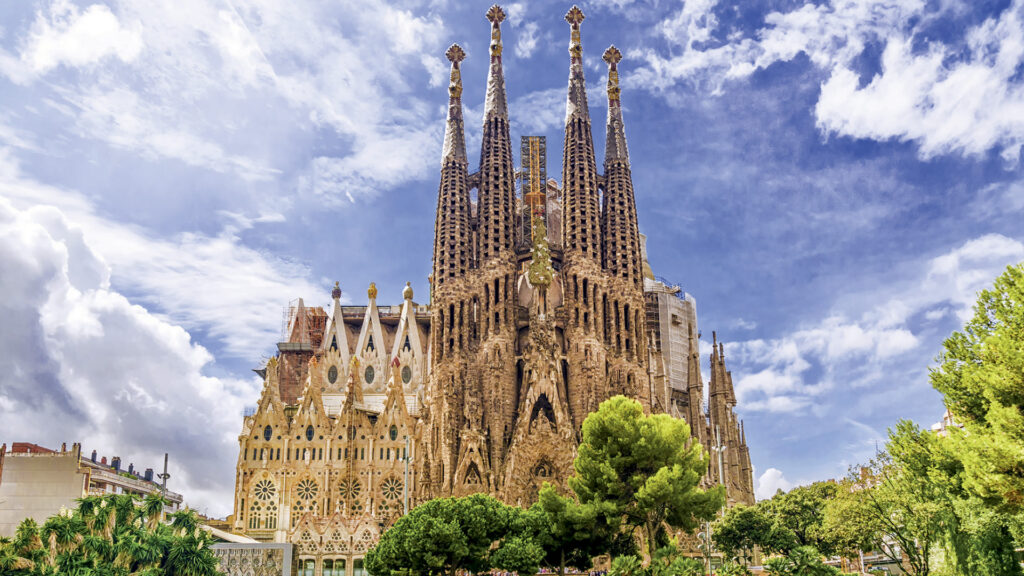
“Do you see that tower? when complete, it will be 172.5 meters high and will become the tallest in Europe. The cathedral, which has been under construction since 1866, will be one of the largest of all religious places in the world…” says the voice in my ear. I am standing inside the main hall of La Sagrada Familia, Barcelona’s most renowned monument, listening to an audio guide, trying to absorb all that I hear and see. And there’s much to take in. The columns—tall, curvy, and knotted in parts—resemble tree trunks that converge on top and form large canopies on the ceiling. The windows, arched and high, are adorned with stained glass, letting in the mellow afternoon light in shades of amber, turquoise, emerald, and vermilion. At a short distance is a chapel; though not small by any measure, it seems dwarfed by the high ceilings, tall pillars, dancing shadows, and the hundreds of people milling around.
The Modernisme Maverick
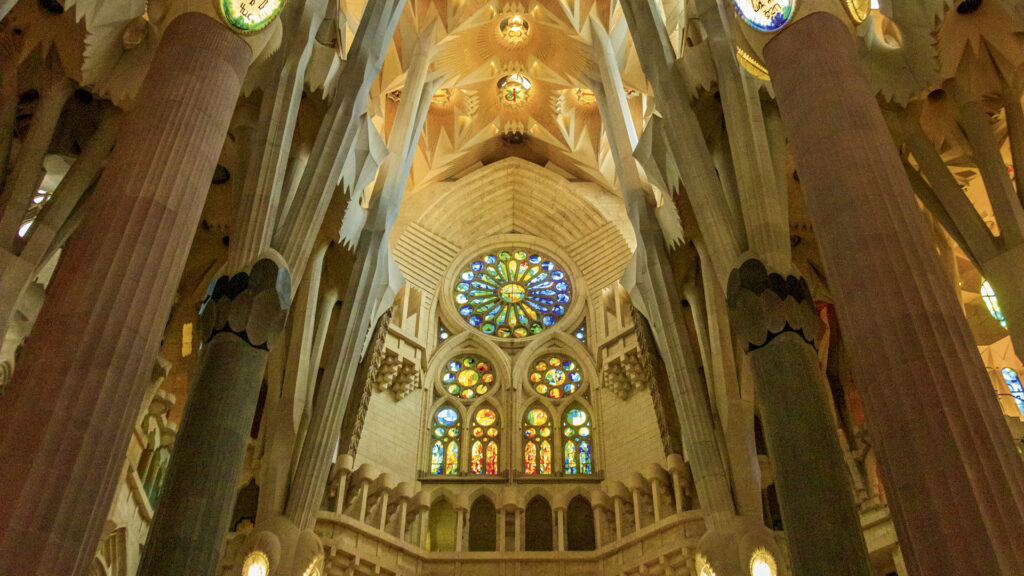
I have come to Barcelona for one reason—to witness the fantastical creations of Antoni Gaudí, the famed Spanish architect considered a genius and an eccentric in equal measure. Standing inside his grandest creation, La Sagrada Familia, a wonderland he conceptualised over 150 years ago, I begin to see why he held that reputation. Gaudí entered Barcelona’s design scape in the late 1800s when the city was dealing with the aftermath of industrialisation. While there was new money—and the urge to spend it—the city did not look its best.
Known for his distinct aesthetic, the architect was commissioned to design wealthy family homes to set them apart from the others.
And so was born a new style. Full of curves and colour, with unusual shapes and patterns inspired by nature, his buildings showcased his take, which embodied the Modernisme style, a close form of the Art Nouveau movement sweeping across Europe at the time. Private commissions, however, could not sustain him for long and at the age of 31, he dedicated himself to La Sagrada Familia, the best example
of his stark, edgy, sensuous, and surreal design sensibility.
Nature Etched in Stone, Glass, and Iron
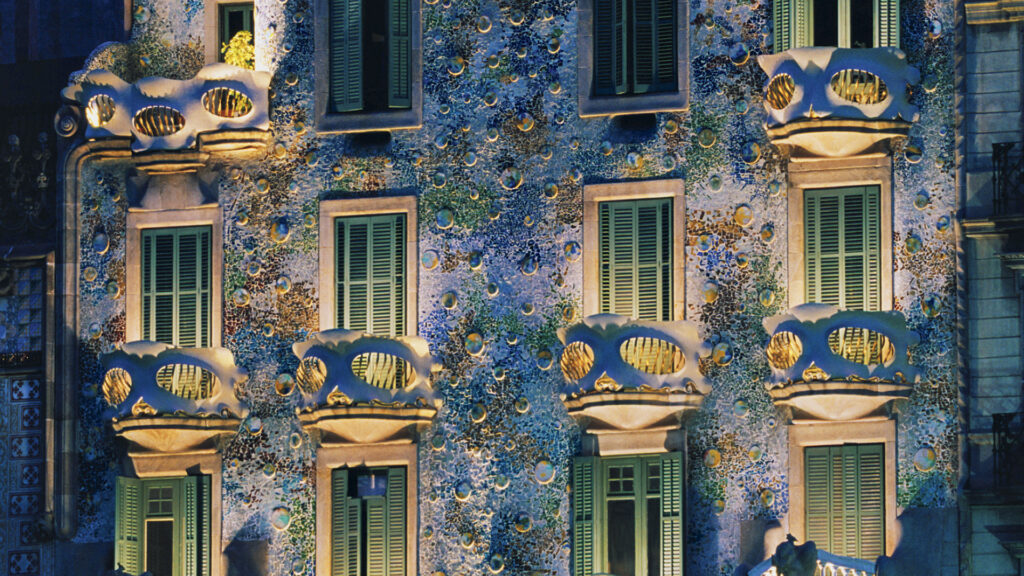
“Of all the mansions designed by Gaudí, Casa Batlló is one of the
most prominent examples of Modernisme,” our guide Sara informs
us. Standing in front of an impressive residence covered in blue-and-green mosaic and skeletal balconies, our tour group squints as we all crane our necks trying to spot the dragon atop the roof. “As with all of Gaudí’s work, Casa Batlló was also criticised for its radical design but was announced as one of Barcelona’s best three buildings by the city council soon after,” smiles Sara. She goes on to tell us that most of Gaudí’s clients were unhappy with his outrageous ideas, but he went ahead with them, nonetheless. Casa Batlló is designed to represent the ocean. While the dragon rests on the rooftop, the atrium is covered in shimmering blue tiles, which, when seen through refracting light, create an illusion of moving waves. I notice how the dimensions of windows, curvy and flowing, change with height, once again giving an illusion of being under water. Even the staircase replicates the pattern of waves. The furniture features similar details, as do the doors and their handles, which, I learn, were especially modelled by Gaudí to follow the grip of the human hand. Remarkable! This ode to nature is evident in all his works.
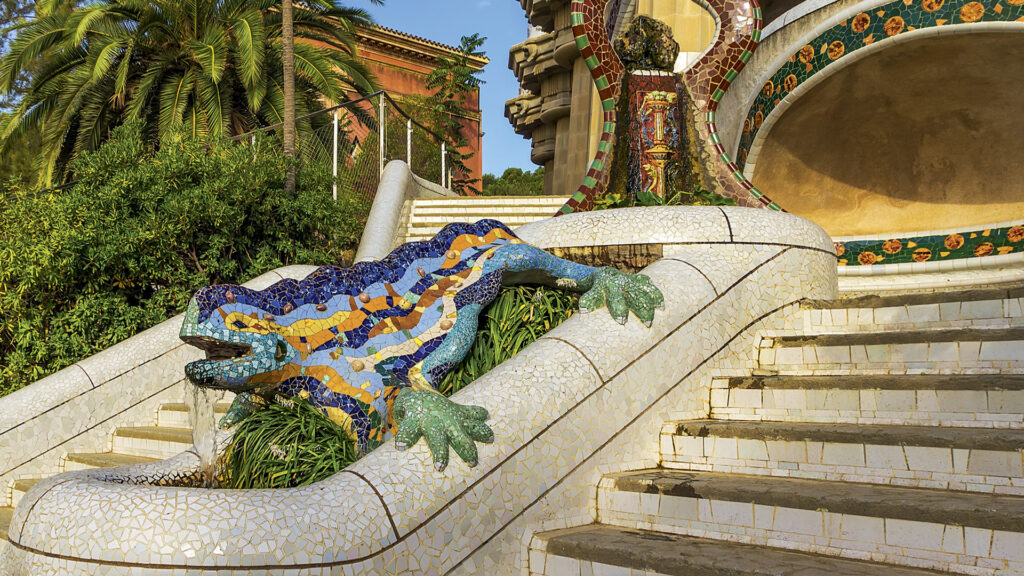
And as I travel through the city, exploring many of his masterpieces,
I find several references detailing this specific aspect—a bunch of striking, purple-coloured grapes atop La Sagrada Familia, a giant mosaic lizard in Park Güell, an elegant iron eagle at Palau Güell, blindingly bright fruit motifs at Casa Vicens Gaudí, and so on.
While the design lover in me is thrilled at the clever, crazy, and colourful elements I see in each of his creations, I wonder if
I would be able to live in any of these buildings. I cannot find
a suitable answer.
Stark Minimalism Meets the Supernatural
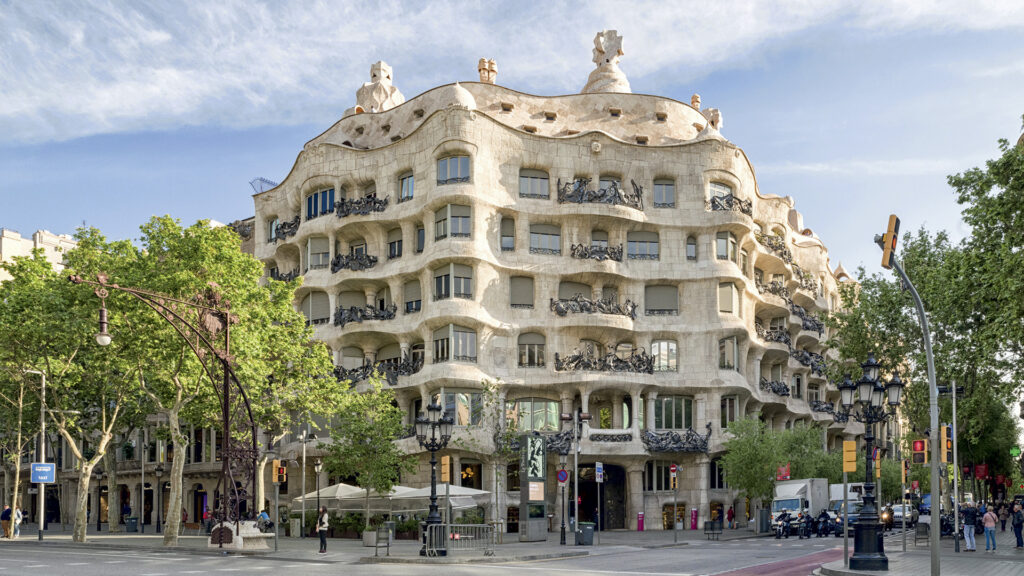
It is evening when I arrive at Gaudí’s most celebrated mansion, Casa Milà, also known as La Pedrera (the stone quarry). Having seen several of the architect’s buildings by now, I am certain there is nothing new
to discover. But my ticket promises champagne, chocolate, and Gaudí,
so I go anyway. The façade of La Pedrera, marked by a stark minimalism and neutral tones, resembles a giant, wavy rock. Is this contrast a deliberate attempt to stand out, an evolution of Gaudí’s aesthetics, or him finally succumbing to critics who never approved of his sartorial style, I am unable to tell. My questions are answered by the young guide in the flower courtyard. “La Pedrera is a masterpiece; the very essence of Gaudí’s work. This staircase you see is actually a root winding around the wall and these pillars are its stems; on the ceiling you can see dainty floral motifs that complete the picture.”
The starkness, of course, was deliberate as was the understated design inside. While there are many elements that stand out at La Pedrera, the rooftop is a major attraction. “On the terrace, Gaudí combined art and architecture to create a fascinating and evocative space,” the guide says, while guiding us under low arches, in between towers, to a cluster of chimneys. Twisted, spooky, and oddly shaped, they look like human skulls from the future. “Star Wars!” yells someone, “Darth Vader!” says another, and I immediately see the resemblance. As the lights turn on over the chimneys, bringing them to life with patterns and colours, I wonder how something built 110 years ago could possibly inspire some of the biggest phenomena of current times. But then, with Gaudí, nothing is impossible.
Related: Discover The Charm Of Delhi Through Its Best Walking Trails




